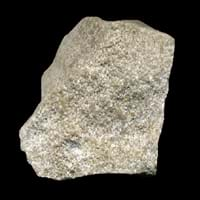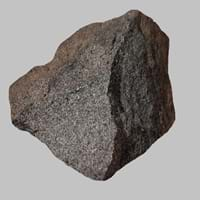Definition
Oolite is a sedimentary rock formed from ooids, spherical grains which are composed of concentric layers of calcite
Vogesite is a porphyritic alkaline igneous rock and is a variety of Lamprophyre which is dominated by essential amphibole, usually hornblende, and potassic feldspar
Discoverer
Unknown
Unknown
Etymology
From oo- + -lite, after German Oolit. A rock consisting of fine grains of carbonate of lime
From the variety of Lamprophyre Greek lampros bright and shining + porphureos purple
Class
Sedimentary Rocks
Igneous Rocks
Sub-Class
Durable Rock, Medium Hardness Rock
Durable Rock, Medium Hardness Rock
Other Categories
Fine Grained Rock, Opaque Rock
Coarse Grained Rock, Fine Grained Rock, Opaque Rock
Texture
Clastic or Non-Clastic
Porphyritic
Color
Black, Blue, Brown, Cream, Green, Grey, Pink, Red, Silver, White, Yellow
Black, Bluish - Grey, Brown, Dark Greenish - Grey, Green, Grey
Durability
Durable
Durable
Scratch Resistant
Yes
Yes
Appearance
Rounded and Rough
Dull, Banded and Foilated
Interior Uses
Decorative Aggregates, Flooring, Interior Decoration
Decorative Aggregates, Entryways, Flooring, Homes, Interior Decoration
Exterior Uses
As Building Stone, As Facing Stone, Garden Decoration, Paving Stone
As Building Stone, As Facing Stone, Garden Decoration, Office Buildings, Paving Stone
Other Architectural Uses
Not Yet Used
Curbing
Construction Industry
Cement Manufacture, Cobblestones, Landscaping
As Dimension Stone, Cement Manufacture, for Road Aggregate, Making natural cement, Manufacture of Magnesium and Dolomite Refractories
Medical Industry
Not Yet Used
Taken as a Supplement for Calcium or Magnesium
Antiquity Uses
Artifacts
Artifacts, Monuments, Sculpture
Commercial Uses
Creating Artwork, Jewelry, Used in aquariums
An Oil and Gas Reservoir, As a Feed Additive for Livestock, Gemstone, Metallurgical Flux, Production of Lime, Soil Conditioner, Source of Magnesia (MgO)
Types
Not Available
Minette, Alnoite, Camptonite, Monchiquite, Fourchite, Vogesite, Appinite and Spessartite
Features
Available in lots of colors, Generally rough to touch, Very fine grained rock
Always found as volcanic pipes over deep continental crust, Host rock for Diamond, Is one of the oldest rock, Surfaces are often shiny
Archaeological Significance
Monuments
Not Yet Used
Used
Famous Monuments
Not Applicable
Data Not Available
Sculpture
Not Yet Used
Used
Famous Sculptures
Not Applicable
Data Not Available
Figurines
Not Yet Used
Used
Formation
Oolites form when layers of calcite are deposited around a sand grain or fossil piece and are rolled around in calm water, which makes them round.
Vogesite formation takes place deep beneath the Earth’s surface at around 150 to 450 kilometres, and are erupted rapidly and violently.
Mineral Content
Calcite, Chert, Clay, Dolomite, Quartz, Sand, Silt
Amphibole, Carbonate, Garnet, Micas, Olivine, Phlogopite, Pyroxene
Compound Content
Aluminium Oxide, Ca, NaCl, CaO, Iron(III) Oxide, FeO, MgO
Aluminium Oxide, NaCl, CaO, Iron(III) Oxide, FeO, Potassium Oxide, MgO, MnO, Sodium Oxide, Silicon Dioxide, Titanium Dioxide
Types of Metamorphism
Not Applicable
Burial Metamorphism, Cataclastic Metamorphism, Contact Metamorphism, Hydrothermal Metamorphism, Impact Metamorphism, Regional Metamorphism
Types of Weathering
Biological Weathering, Chemical Weathering, Mechanical Weathering
Biological Weathering, Chemical Weathering, Mechanical Weathering
Types of Erosion
Chemical Erosion, Coastal Erosion
Chemical Erosion, Coastal Erosion, Glacier Erosion, Sea Erosion, Water Erosion, Wind Erosion
Grain Size
Fine Grained
Fine to Coarse Grained
Fracture
Conchoidal
Conchoidal
Porosity
Less Porous
Very Less Porous
Luster
Pearly to Shiny
Subvitreous to Dull
Cleavage
Non-Existent
Conchoidal
Toughness
1
Not Available
Specific Gravity
Not Available
2.86-2.87
Transparency
Opaque
Translucent to Opaque
Density
Not Available
2.95-2.96 g/cm3
Resistance
Heat Resistant, Wear Resistant
Heat Resistant, Impact Resistant
Deposits in Eastern Continents
Asia
Brunei, India, Indonesia, Malaysia, Singapore, Thailand, Vietnam
Russia
Africa
Cameroon, Chad, Ghana, Kenya, Malawi, Sudan, Tanzania, Togo, Zambia, Zimbabwe
Angola, Botswana, Cameroon, Ethiopia, South Africa
Europe
United Kingdom
England, Hungary, Iceland, United Kingdom
Others
Not Yet Found
Antarctica, Greenland
Deposits in Western Continents
North America
USA
Canada, Mexico, USA
South America
Colombia
Argentina, Colombia, Ecuador
Deposits in Oceania Continent
Australia
Adelaide, New Zealand, Queensland, Tonga, Victoria, Yorke Peninsula
New South Wales, New Zealand, Queensland, South Australia, Western Australia
All about Oolite and Vogesite Properties
Know all about Oolite and Vogesite properties here. All properties of rocks are important as they define the type of rock and its application. Oolite belongs to Sedimentary Rocks while Vogesite belongs to Igneous Rocks.Texture of Oolite is Clastic or Non-Clastic whereas that of Vogesite is Porphyritic. Oolite appears Rounded and Rough and Vogesite appears Dull, Banded and Foilated. The luster of Oolite is pearly to shiny while that of Vogesite is subvitreous to dull. Oolite is available in black, blue, brown, cream, green, grey, pink, red, silver, white, yellow colors whereas Vogesite is available in black, bluish - grey, brown, dark greenish - grey, green, grey colors. The commercial uses of Oolite are creating artwork, jewelry, used in aquariums and that of Vogesite are an oil and gas reservoir, as a feed additive for livestock, gemstone, metallurgical flux, production of lime, soil conditioner, source of magnesia (mgo).










